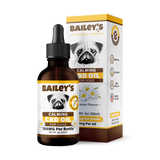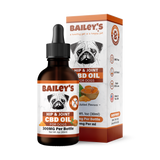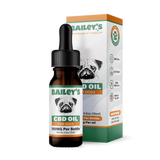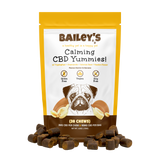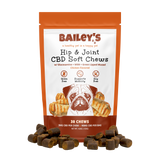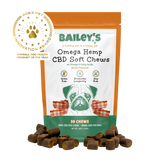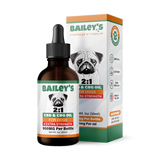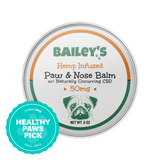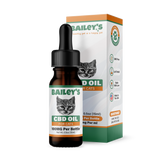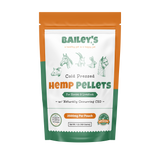Paint Horse: Breed Insights

Welcome to the vibrant world of the Paint Horse, a breed that's as colorful in spirit as it is in appearance! For centuries, these stunning equines have pranced their way into the hearts of horse lovers everywhere. Known for their eye-catching coat patterns and versatile abilities, Paint Horses truly stand out as one of the equine world's most remarkable treasures.
In this delightful journey, we'll gallop through the rich origins, captivating characteristics, and the joyful temperament that make Paint Horses a breed like no other. We're not just talking about their striking looks; we'll also dive into the essentials of optimal care and address the unique health needs that come with such a distinguished breed. Discover the key to optimal care requirements and learn about health concerns specific to the Paint Horse breed.
Table of Contents
1. Understanding the Paint Horse Breed

1.1 Origin and History of Paint Horses
Paint Horses have a rich and colorful history that traces back to the Native American tribes of North America. The Native Americans valued horses with unique coat patterns, and they selectively bred their horses to achieve these desired traits. This practice laid the foundation for the modern-day Paint Horse breed.
The Native Americans believed that the coat patterns of their horses held spiritual significance. They believed that horses with certain markings possessed special powers and abilities. For example, a horse with a symmetrical pattern was thought to bring balance and harmony to its rider, while a horse with a bold and intricate pattern was believed to bring protection and strength.
It wasn't until the mid-20th century that Paint Horses gained recognition as a distinct breed. In 1962, the American Paint Horse Association (APHA) was formed to preserve and promote the breed. Today, the APHA is one of the largest equine breed registries in the world.
The APHA not only registers horses based on their coat patterns but also evaluates their conformation, temperament, and athletic ability. This ensures that Paint Horses maintain the qualities that make them unique and versatile.
1.2 Unique Characteristics of Paint Horses
One of the most striking features of the Paint Horse is its coat patterns. These patterns can range from solid colors to elaborate combinations of white and any other equine coat color. Common coat patterns include overo, tobiano, and tovero.
The overo pattern is characterized by irregular, scattered patches of color on a white background. The tobiano pattern, on the other hand, features bold, overlapping patches of color on a white base. Tovero is a combination of both overo and tobiano patterns, with a predominantly dark head and a mix of large and small patches of color.
Paint Horses are also known for their versatility. They excel in various disciplines, including Western pleasure, cutting, reining, and even English disciplines like jumping and dressage. This versatility, coupled with their distinct appearance, makes Paint Horses popular among equestrians of all levels and interests.
Paint Horses have a natural athleticism and intelligence that allows them to adapt to different riding styles and tasks. Their strong build and muscular physique make them well-suited for activities that require agility and speed, such as barrel racing and roping. At the same time, their calm and gentle nature makes them suitable for beginners and riders who prefer a more relaxed riding experience.
Furthermore, Paint Horses are known for their strong work ethic and willingness to please their riders. They are quick learners and are often praised for their trainability. This makes them a favorite choice for trainers and riders who value a horse that can easily grasp new concepts and commands.
Whether you're looking for a horse to compete in high-level competitions or simply enjoy leisurely trail rides, the Paint Horse breed offers a wide range of options. With their unique coat patterns and versatile abilities, Paint Horses continue to captivate the hearts of equestrians around the world.
2. The Paint Horse's Temperament
2.1 General Behavior and Personality Traits
Paint Horses are known for their friendly and docile nature. They are typically easy-going and willing to please their owners. This temperament makes them suitable for riders of all ages and skill levels. Paint Horses often form strong bonds with their human counterparts, making them excellent companions and therapy animals.
When it comes to their behavior, Paint Horses are not only known for their friendliness but also for their intelligence. They are quick learners and have a natural curiosity that drives them to explore their surroundings. This inquisitive nature makes them highly trainable and adaptable to various riding disciplines.
Another interesting aspect of the Paint Horse's personality is their resilience. They are known to have a calm and level-headed demeanor, even in challenging situations. This makes them well-suited for activities such as trail riding or working in high-stress environments, where their steady temperament shines through.
2.2 Interaction with Humans and Other Horses
Paint Horses are social animals and enjoy interacting with both humans and other horses. They are generally well-liked by their equine peers and are well-suited for group turnout. When properly socialized, they can display excellent herd dynamics and get along well with other horses in a pasture setting.
When it comes to their interactions with humans, Paint Horses are known to be highly affectionate and responsive. They thrive on human companionship and are often eager to please their owners. This strong bond between horses and humans can lead to a deep level of trust and partnership, making them ideal for various equestrian activities such as dressage, show jumping, or even ranch work.
Furthermore, Paint Horses have a natural ability to read human emotions and respond accordingly. They are often described as intuitive and empathetic, which makes them excellent therapy animals. Their gentle and understanding nature allows them to connect with individuals who may be facing physical or emotional challenges, providing them with comfort and support.
It's also worth mentioning that Paint Horses have a unique way of communicating with humans. They are highly expressive creatures, using their body language and facial expressions to convey their thoughts and feelings. This makes them not only fascinating companions but also great teachers, as they can help humans develop a deeper understanding of non-verbal communication.
The Paint Horse's temperament is a remarkable blend of friendliness, intelligence, resilience, and social skills. Their easy-going nature, combined with their strong bond with humans, makes them versatile and well-suited for various equestrian activities and therapeutic roles. Whether in the pasture or the arena, Paint Horses are sure to captivate both horse enthusiasts and casual observers with their exceptional temperament.

3. Physical Attributes of a Paint Horse
The Paint Horse is a breed known for its distinctive coat patterns, which are one of its defining characteristics. These patterns can vary widely, with each horse having a unique and captivating design. Some Paint Horses may have solid-colored or minimal white markings, while others boast bold and eye-catching patterns that make them stand out in a crowd. Whether they have a simple or complex coat design, Paint Horses never fail to catch the eye and leave a lasting impression.
3.1 Color Patterns and Markings
When it comes to color patterns and markings, the possibilities are endless with Paint Horses. The breed registry recognizes three main coat patterns: overo, tobiano, and tovero. Overo horses typically have irregular, scattered white markings on a dark base coat, while tobiano horses have bold, well-defined white markings that cross over the back. Tovero horses exhibit a combination of both overo and tobiano patterns, creating a unique and striking appearance.
Within these broad categories, there are countless variations and combinations of colors and markings. Some Paint Horses may have a solid-colored coat with minimal white markings, while others may have a predominantly white coat with patches of color. Some horses may have symmetrical markings, while others may have asymmetrical patterns that add to their individuality. The possibilities are truly endless, making each Paint Horse a work of art in its own right.
3.2 Size and Build
Paint Horses come in various sizes and conformations, adding to their versatility and appeal. They typically range from 14 to 16 hands in height, with a sturdy build and well-muscled physique. This athletic build allows them to excel in a wide range of disciplines, from Western pleasure and reining to jumping and dressage.
One of the notable features of Paint Horses is their well-balanced conformation. They possess a harmonious blend of strength and elegance, with a proportionate body that allows them to move with grace and agility. Their strong hindquarters provide the power needed for quick bursts of speed, while their well-structured legs and feet ensure soundness and durability.
Paint Horses are known for their versatility and adaptability, which is reflected in their physical attributes. Their size and build make them suitable for riders of different ages and skill levels. Whether you're a beginner rider looking for a trustworthy companion or an experienced equestrian seeking a competitive partner, the Paint Horse is a breed that can meet your needs.
4. Caring for a Paint Horse
4.1 Dietary Requirements
Proper nutrition is essential for maintaining a Paint Horse's overall health and well-being. A balanced diet should consist of high-quality forage, such as grass hay or pasture, supplemented with a grain mix formulated specifically for horses. It is important to monitor the horse's body condition and adjust the feeding regimen accordingly to prevent obesity or malnutrition.
In addition to forage and grain, Paint Horses can also benefit from the inclusion of certain supplements in their diet. These supplements may include vitamins, minerals, and joint support additives. The specific needs of each horse may vary, so consulting with a veterinarian or equine nutritionist can help determine the best supplement regimen for your Paint Horse.
When it comes to feeding, it is important to establish a consistent feeding schedule. Horses are creatures of habit and thrive on routine. Feeding at the same times each day can help prevent digestive issues and maintain a healthy appetite. Additionally, providing fresh, clean water at all times is crucial for a Paint Horse's well-being.
4.2 Exercise and Training Needs
Like all horses, Paint Horses require regular exercise to maintain their physical and mental well-being. They benefit from a combination of turnout time in a pasture and structured exercise, such as riding or lunging. Adequate exercise helps prevent behavioral issues and keeps the horse in good physical condition. Additionally, training should be consistent, gentle, and tailored to the horse's individual needs.
When it comes to turnout time, it is important to provide a safe and secure environment for the Paint Horse to roam and graze. A well-fenced pasture with access to shelter is ideal. Turnout time allows the horse to socialize with other horses, engage in natural behaviors, and stretch their legs. It is important to monitor the condition of the pasture and rotate grazing areas to prevent overgrazing and maintain optimal forage availability.
In addition to turnout, structured exercise is crucial for a Paint Horse's physical and mental well-being. Riding or lunging can help develop the horse's muscles, improve their cardiovascular fitness, and enhance their overall performance. It is important to start with gentle exercise and gradually increase intensity to avoid injury or strain. Varying the type of exercise, such as trail riding or arena work, can also help keep the horse mentally stimulated and prevent boredom.
Training should be approached with patience, consistency, and respect for the horse's individuality. Each Paint Horse has its own unique personality and learning style. Tailoring the training methods to suit the horse's needs and abilities can help build a strong bond and trust between the horse and the handler. Positive reinforcement techniques, such as rewards and praise, can also be effective in encouraging desired behaviors and creating a positive learning environment.

5. Health Concerns Specific to Paint Horses
5.1 Common Genetic Disorders
While Paint Horses are generally healthy and hardy, they can be prone to certain genetic disorders that are more prevalent in some coat patterns. Overo Lethal White Syndrome (OLWS) is a known genetic disorder that primarily affects horses with certain overo coat patterns. Breeders and owners need to have their horses genetically tested to identify carriers and prevent the occurrence of affected foals.
5.2 Preventative Care and Treatment
Regular veterinary care, including vaccinations, deworming, dental exams, consultation about supplements, and hoof care, is essential for maintaining a Paint Horse's health. Owners should also be diligent in monitoring their horse's coat patterns for any skin issues or areas of sensitivity. Early detection and prompt treatment can help prevent any potential health complications.
6. Conclusion
The Paint Horse is a breed that combines striking beauty with versatility and an amiable temperament. With its rich history, unique coat patterns, and ability to excel in various disciplines, the Paint Horse continues to captivate horse lovers worldwide. By understanding the breed's origins, characteristics, temperament, physical attributes, care requirements, and health concerns, owners and enthusiasts alike can appreciate and care for these magnificent animals.

